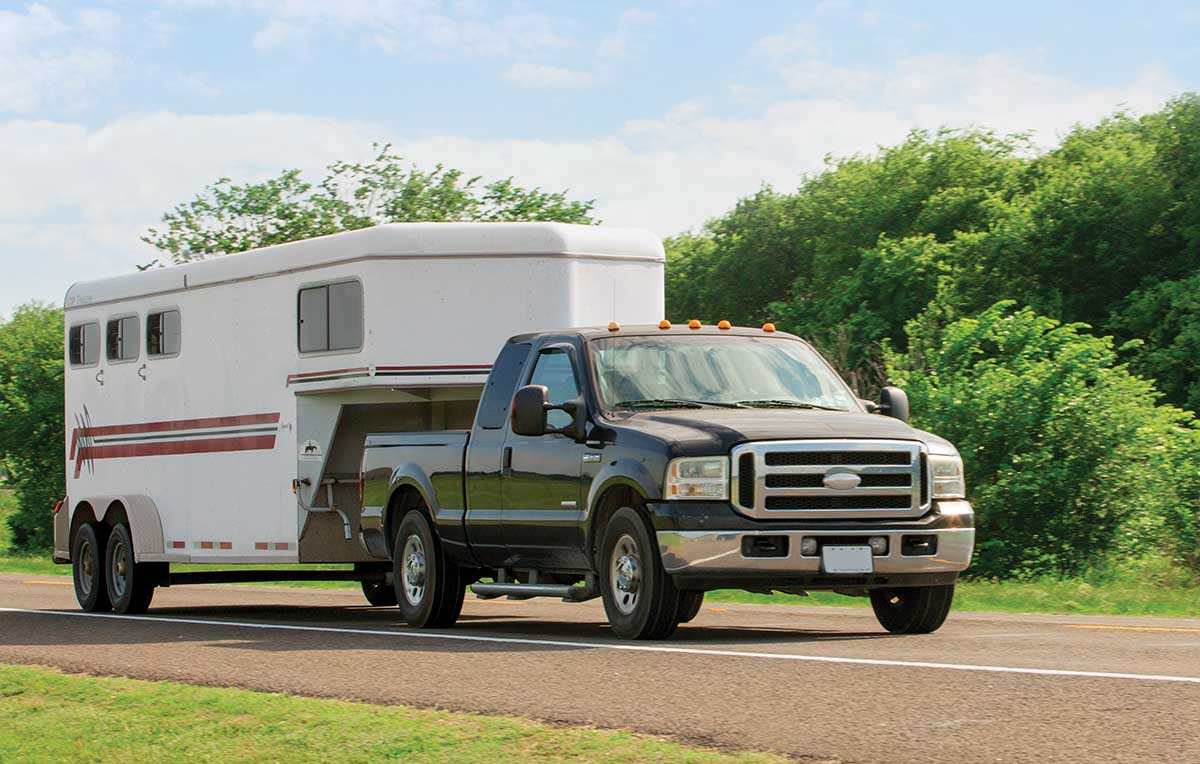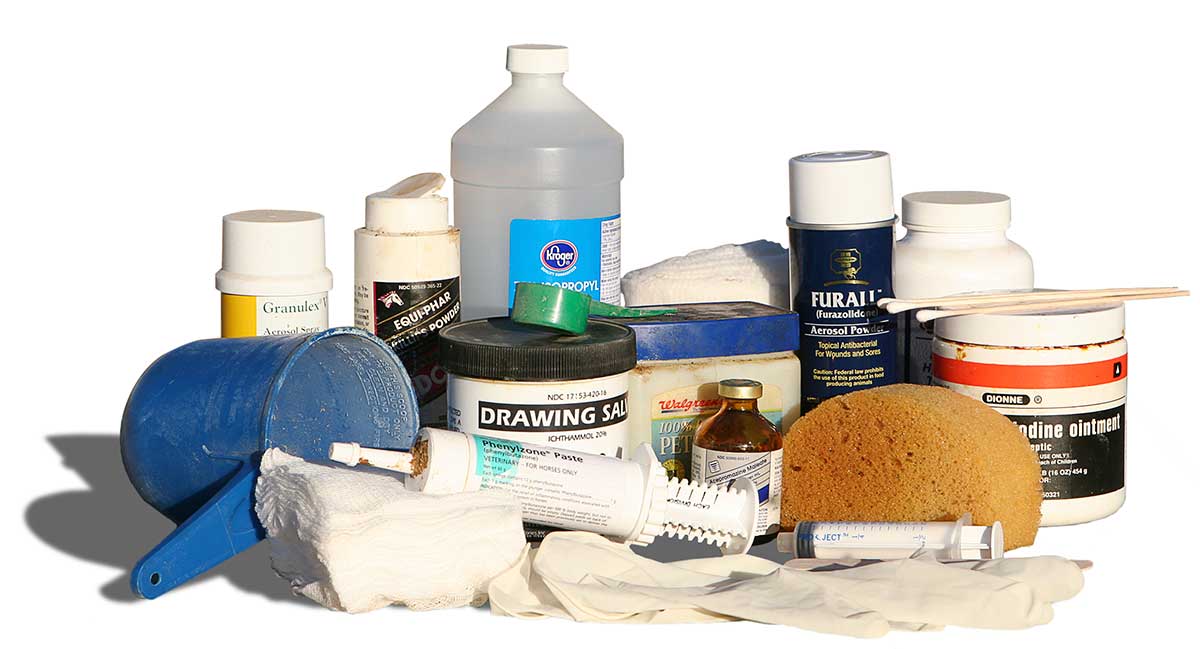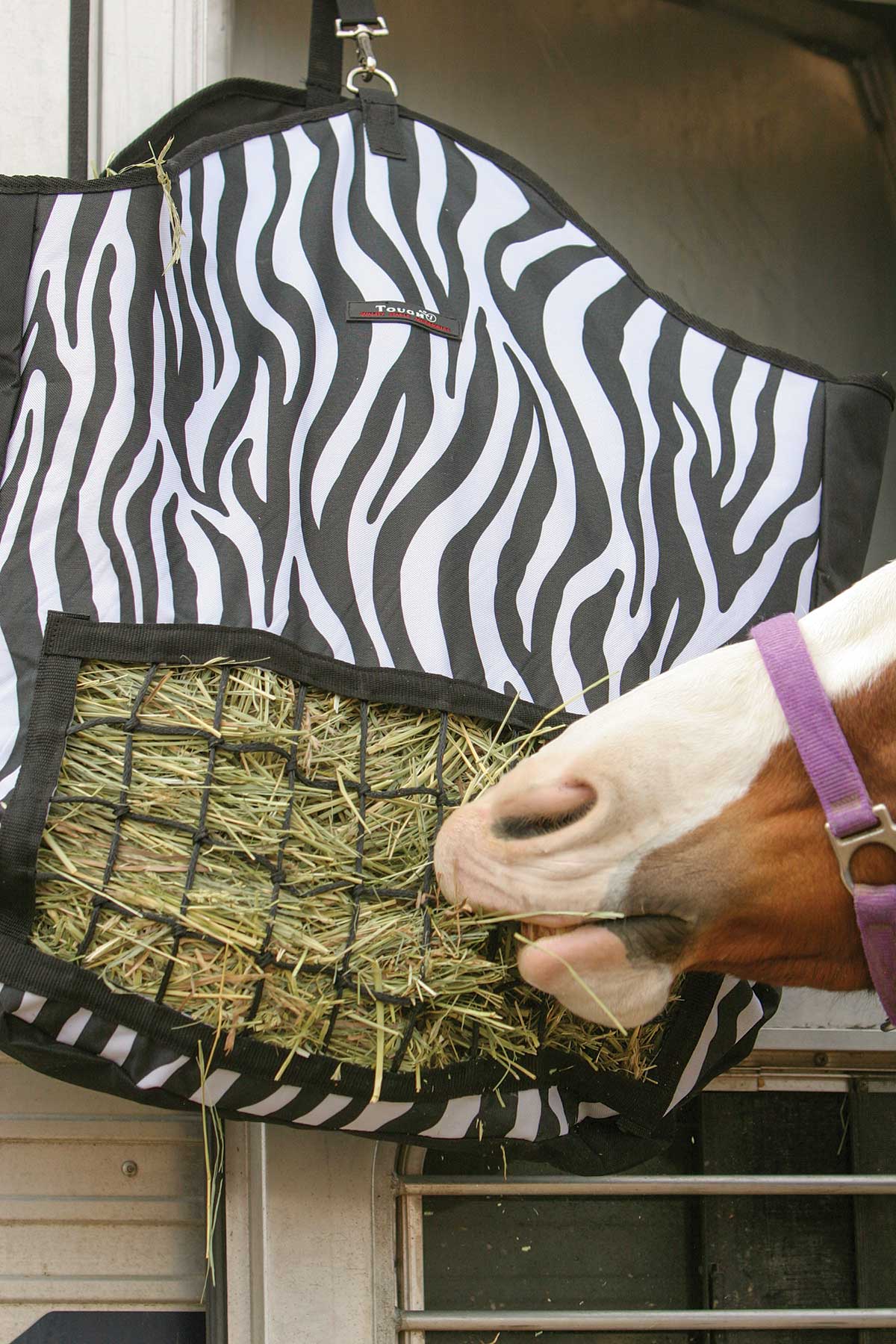
Nearly a decade ago, Megan Carter and her then-12-year-old Arabian gelding, Amigo, prepared for a long move from Juneau, Alaska, to the Eastern Seaboard. The climate and culture of upstate New York was a stark contrast of her native Alaska, but provided a once-in-a-lifetime career opportunity. But after 10 years, it was time for Carter and Amigo to return home.
“I answered the call of the eagles and decided it was time to follow my heart and return home to be with my family and friends,” she says.
In less than six weeks, Carter orchestrated a 4,000-mile relocation for herself and the now 22-year-old Amigo. Her eight-day trip crossed 12 states, the Continental Divide, and the Mississippi and Missouri Rivers, and traveled through international waters. Travel by land culminated in Bellingham, Washington. There are no roads connecting Juneau to the rest of Alaska—or even the rest of North America. That meant the final three days of the journey were aboard a ferry boat.
It wasn’t the pair’s first cross-country experience, but a lot had changed in horse relocation since they’d left Alaska. Carter relied on her tried-and-true strategies from her first adventure and learned a few more. Here she offers 12 tips to make your cross-country—and even cross-water—excursion more comfortable for you and horse.
Pre-Move Planning
• Tip #1: Find the Right Home
Selecting a barn, sight unseen, from hundreds or thousands of miles away can be stressful. If you’re moving to a familiar place, enlist the help of family and friends. Your horse-owning kin can offer sound advice on which boarding stables may be a good fit. In the case they’re not horsey folks, they may at least be able to help by visiting potential barns and reporting observations.
In Juneau, stalls are scarce. The barn where Carter’s mother boards was full, but the equine community there is tight. Her family and friends put the word out that Carter was looking to move home and a couple that no longer had horses offered up a stall in their barn.
On the flip side, if you’ve purchased or rented a property where you’ll have your horses on-site, know in advance whether the property is move-in ready or needs work. If there’s not an existing barn or run-in shelter, is there adequate fencing? If the property needs work, can you rally a working party to meet you upon arrival?

• Tip #2: Map It
Begin planning a route as soon as you learn about your relocation. With so many map apps literally at your fingertips, it’s easy to find directions from one place to the next. But charting a path with a trailer in tow must account for many variables, including changing weather and road conditions.
“We were racing against time,” Carter shares about her move home. “I was worried about crossing the Rockies before the snow set in. We just squeaked through. After we got through the mountains in Montana and Idaho, it snowed on the high passes.”
Once you know the general track you’ll be driving, you can determine how many miles or hours per day of travel are realistic. Carter staggered her trip, driving nearly 8 hours the first day, 12 hours the following two days, 10 hours the fourth day, and four hours on the last day. This left the longest recovery day just prior to boarding the ship and sailing home.
• Tip #3: Consider Layovers
Overnight accommodations had to be part of Carter’s master plan. As she plotted her driving route, she simultaneously researched barns with one-night stall rentals. She used Google to search the term “horse layovers” and used helpful websites to find facilities based on these layovers. (Editor’s note: You can also find overnight-stabling options in the Where-to-Ride Guide on HorseandRider.com.)
“I took notes, made phone calls, and booked reservations online,” she shares. “A week before departure, I followed up with each location to confirm the arrangements. Once I was on the road, I called ahead with estimated times of arrival.”
• Tip #4: Get Paperwork in Order
Just as when you travel to a show or trail ride across state lines, you’ll need to investigate the veterinary records required along the way, at each “horse hotel,” and at your final destination.
“I was required to contact the Alaska State Veterinarian to obtain a permit to bring Amigo into the state on the ferry,” she explains. Without it, her entire trip would’ve been in vain.
The ferry had its own requirements, including the permit, negative Coggins test, a health certificate, and a rabies vaccination. Most relocations won’t include a ferry, but if at any point someone else will be in charge of transporting your horse, find out about any requirements you’ll need to meet.
Investigate any additional vaccinations needed at your final destination, whether you’ll be at a commercial boarding facility or a barn on your own property.
ALL ABOARD
It’s common for international-level show horses to travel by ferry or plane, but most horse owners move their horses by truck and trailer. Horse owners living in Alaska are familiar with the unique requirements for traveling by ferry as that’s often the only viable option for getting to shows or other events.
The Alaska Marine Highways system provides specific guidelines for livestock traveling on the ferry. For example, shavings and straw are prohibited. No more than five bales of hay can be carried by a single truck/trailer combination. These essentials are flammable. Sand, dirt, cat litter, or wood pellets can be used.
Depending on the mode of transport, water may not be readily available.
“Even though the ferry has water spigots on deck, the reservation people will tell you they do not have water for ‘livestock’,” notes Carter.
Carry a portable water tank so you have enough water for the trip.
“Amigo actually drank better on the ferry then he did anywhere else,” says Carter. “Once horses get on the ferry, they tend to relax because they don’t have to shift or brace their weight to keep up with the changing terrain of the road.”
Transporting livestock on the ferry must be pre-approved and entails specific guidelines. The animals remain in the trailer and travel on the ferry’s car deck. Owners/caretakers are granted access at scheduled intervals throughout the trip to check feed and water supply.

• Tip #5: Pack First-Aid Supplies
Be prepared and carry supplies for any and all emergencies. An equine thermometer, anti-bacterial ointment, and Vetrap are a few of the basics. Your veterinarian can offer additional recommendations based on your horse’s needs.
Carter was glad she included Banamine (a non-steroidal, anti-inflammatory drug dispensed by veterinarians) in her kit. On the second day of the trip, Amigo spiked a fever and was noticeably uncomfortable. At the pair’s first stop in Minnesota, she administered the pain reliever and watched Amigo closely throughout the night. He’d recovered by morning and was ready to continue on the journey. Carter did replenish her supply of Banamine just in case she needed it again.
“It’s helpful to have on hand in an emergency,” Carter advises.
• Tip #6: Schedule a Pre-Trip Inspection
Hire a reputable mechanic to examine your truck and trailer. Perform any regular maintenance or needed repairs before hitting the road. If you haul regularly, you’re probably ready to go. If your rig has been sitting idle for any period of time, make sure everything is in working order.
“I hadn’t used my trailer in four years,” Carter shares. “And I’d purchased a new truck, so I had a hitch installed and made sure the trailer was safe.”
On the Road
• Tip #7: Make Regular Pit Stops
Schedule stops every few hours. Drivers and passengers alike need food and bathroom breaks and a few minutes to stretch. Traveling with additional animals, such as cats or dogs, can also necessitate stops.
• Tip #8: Offer Fluids
Dehydration can be a challenge, especially for horses that aren’t used to traveling. They may not like the taste of unfamiliar water or may be reluctant to drink while in transit. If you know you have a finicky horse, fill a portable tank, and bring water with you. Depending on the distance this supply won’t last the entire trip, but it’s a good way to start.
“Amigo became dehydrated because he wouldn’t drink early in the trip,” Carter says. “So I mixed bottled spring water and apple cider, which was more to his liking.” Consider adding flavoring to your horse’s home water to accustom him to the taste, then continue flavoring it on the road for consistency.

• Tip #9: Provide Hay
Full hay bags keep horses occupied during an otherwise monotonous ride. Fill a few extra hay bags before leaving so that when you stop to check on the horses you can easily swap a full bag for an empty one without fussing with hay nets in a parking lot. Bringing enough hay from home is easier on your horse’s system and avoids a swift switch in feed supply.
• Tip #10: Provide Airflow
Adequate ventilation is key to a comfortable ride across the many miles. Open vents to promote airflow. Keep an eye on changing weather conditions as you travel. You might need to adjust the vents several times across the varying weather zones.
“What you think is cold is actually refreshing for your horse,” Carter shares.
Settling In
• Tip #11: Find Feed and Hay
Ideally, you’ll bring a supply of grain and several days’ worth of hay along with you to provide a smooth transition to a new food source. In advance of your arrival, call the local feed store or a boarding facility to request recommendations for reputable hay suppliers. Don’t be afraid to look around or pass on hay if you’re not satisfied with the quality. (A full-service facility will source hay and feed for you.)
• Tip #12: Find Your Tribe
Once you arrive and have the necessities taken care of, ask around for recommendations of veterinarians, farriers, and other professionals needed for your horse’s long-term care and to establish your new horse life.






